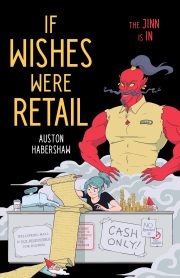Key Conditions for Reader Suspense:
Part 1 – It’s All About the Reader
by John D. Brown
The following is Part One in a series of weekly posts. Head to Key Conditions for Reader Suspense: Table of Contents for a full listing.
Sometimes it feels like there are a thousand things to remember when writing a story. New writers who make lists of these things soon begin to drown in them. But I’ve come to realize that many of these “rules” don’t matter.
They don’t matter because many ignore the function of story. This makes it impossible to know how and when to apply them, or if they’re even something you should apply in the first place.
Furthermore, a good number that do tie back to function often have little impact.
In fact, the more I write, the more I believe the Pareto Principle applies to writing–a few vital factors make up most of the effect. The key is to focus on a limited number of fundamentals, on the things that matter most. The things that produce the biggest bang for the buck.
So what really matters when you’re writing a story?
That all depends on what you’re trying to do. Form follows function.
So what is the function, the objective?
First of all, it’s something that happens in the reader. Readers buy stories because they provide a service, they do something to the reader, guide them into an experience. In this series, I take a look at what I think is one of the core elements of the story experience and identify the Pareto factors for delivering it to the reader.
That story core, or at least a huge part of it, is suspense.
Man goes out and turns on his sprinklers. They hiss to life. He scratches his bum, looks at the rising sun, goes back inside, and nothing more happens.
You want to pay me money for that one? Want to make it into a movie? It’s a story.
Yeah, it’s a story alright, you may say, but who cares?
Okay, so maybe while he’s scratching his bum, a guy with a gun slips in the back. The intruder points the gun at the man’s daughter who is standing by the toaster buttering her bread. She’s a teenager, dressed in cutoffs and hiking boots. The intruder says, “Your father is going to be coming back through that door any time now. You’re going to call him into the kitchen. We’re going to have a chat. You two didn’t finish the business we talked about.”
The girl only has a butter knife, but she grips it tighter, considers that only 13% of shots fired by cops in gunfights hit home. This was drilled into her by her firearms instructor. The guys who are trained only hit 13% of the time. It’s that low even though most gunfights start with the opponents standing only six feet away from each other–the distance between her and Gideon with his gun. That’s what happens when the adrenaline takes over. But Gideon doesn’t look like he’s full of adrenaline. He looks like a man going to a BBQ. So maybe he has a 40% chance with each bullet. That still gives her 60.
The front door opens. It distracts Gideon for just a moment. The barrel of his gun moves slightly to the left. . . .
It’s not a story yet, but it’s more interesting. And it’s more interesting because that second version generated something the first one never could. What it generated, dear Reader, was a little rise of hope, fear, and curiosity–a little suspense.
After finishing draft 3 of CURSE OF A DARK GOD, I needed a break. So I reviewed my notes of DARK GOD’S GLORY, debriefed the many things I learned this last year about novels and story (and, oh boy, was it a year for learning), wrote up my “Ideal Novel” document, and then began to review my ideas on structure and suspense.
I think I’ve found some clarity and solidified a number of Pareto factors for suspense. I’m going to share my current thoughts on the subject in this series.
Because form follows function, let’s start with the end in mind.
In the stories we love, the stories we stay up late at night for, the ones for which we pay $25.99 in hardback, the ones we willingly spend hours of our life on, those stories very frequently put the reader into a state of hoping and fearing for a character. This starts as curiosity and quickly moves to sympathy. Very often it builds to an edge-of-your-seat worry that continues up to the end of the novel. At that point the reader experiences a cathartic release.
When we talk about suspense, this is what I believe we’re talking about. And a key thing to remember is that the tension we’re after is NOT something that’s in the text. It’s something the text builds IN THE READER. So you may have massive explosions, deaths, chases, escapes, villains, and all the hordes of hell combine in your story, in the text, but that does not mean the story has dramatic tension. Because dramatic tension is a READER concept. You may have a relatively quite scene where a child is doing nothing more than swinging at a park, but because the reader knows the child molester has just arrived and the park is empty, the scene creates dramatic tension. The girl feels no tension. She’s just swinging away. But the reader’s tension goes through the roof. It’s all about what happens in the READER.
So the question is what key factors of a story guide the reader into this dramatic tension?
Well, we first need to understand what’s involved with this tension. What’s it made of? I came across a lovely discussion of this in David Howard’s How to Build a Great Screenplay and have adapted it to my use. In emotional terms, we HOPE and FEAR for a character. “We don’t know what WILL happen, but we know [or suspect] what MIGHT happen, and therefore feel tension about those possibilities” (p52).
Notice the key ideas:
Hope
Fear
Character
Uncertainty
So what makes us hope or fear for someone? What makes us uncertain of an outcome? What are the key conditions for READER suspense?
A story is made up of four main elements: character, setting, problem, and plot. I see vital ingredients, key conditions, in problem, character, and plot. In this series I’ll discuss the Pareto factors for suspense I see working in those three areas. In the next post, I’ll start with problem, the engine that makes story go.
John Brown is an award-winning novelist and short story writer. Servant of a Dark God, the first book in his epic fantasy series, was published by Tor Books and is now out in paperback. Forthcoming novels in the series include Curse of a Dark God and Dark God’s Glory. He currently lives with his wife and four daughters in the hinterlands of Utah where one encounters much fresh air, many good-hearted ranchers, and an occasional wolf.
For a list of all of the posts in this series, click on the “John Brown” tag.



